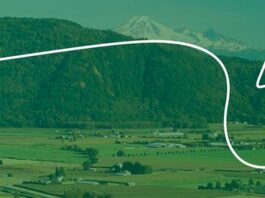By Vanessa Broadbent (The Cascade) – Email
Everyone knows that UFV has an athletic department. Whether you’re an avid follower of varsity sports or really couldn’t care less, we all know it’s there.
But what most students don’t know, is that there’s a lot more that goes into a successful team than just athletes. Working hard from the sidelines, every team has its own student trainer. Student trainers work as part of the Cascades’ athletic therapy department, under the guidance of athletic therapist Tyne Campbell.For the men’s soccer team, that student trainer is Mark Murdoch.
“Basically we work with the team before, during, and after games and practices,” he explained. “Anything from taping or stretching or hands on, or anything to do with injuries and pre -game work or post-game recovery.”
Gagan Paul, student trainer for the women’s soccer team, arrives early to every morning practice to begin her work.
“I’m here an hour before the team is and I start taping,” she explained. “The women’s soccer team has a lot of ankle tape jobs and I’ll be taping roughly around an average of 12 ankles a day … My goal is to make sure that all the athletes are healthy and ready to play.”
And when practice actually starts, the work doesn’t stop for Paul.
“When practice starts, my job is to make sure that I watch the game play, watch to see if they’re running correctly, or if they’re physically on top of their game,” she said. “For example, if there was an injury during practice, it’s my job to go over and assess it.”
This routine is no different for Murdoch.
“I’ll stay by the field so I can see if someone goes down, what kind of injury and what mechanism is involved,” he said. “Basically, throughout the entire practice I’m watching, and then post-practice they’ll come to me if there’s anything they need addressed again. That’s a typical practice.”
Both Paul and Murdoch are fourth-year kinesiology students planning to pursue a career in physiotherapy. They saw becoming student trainers as a way to gain more experience in the field.
“I became a student trainer to have a feel of what my future would look like in physio,” Paul explained.
Murdoch is getting ready for grad school and has found that being involved in athletic therapy has helped him prepare.
“I’m potentially looking at physiotherapy for a master’s degree,” he said. “A lot of what I encounter either on the field or in rehab, it’s very similar to what I would be doing in the physical therapy field.”
Being able to practice athletic therapy gives Murdoch and Paul the opportunity to take their learning out of the classroom.
“There are a lot of academic benefits; a lot of the knowledge I’ve learned here carries over into my classes,” Murdoch explained. “It’s always challenging when dealing with a new injury that’s unfamiliar, but it’s a good learning tool, working through your checklists and going through all of your assessments that in theory we know, but then putting it into practice.”
Although being student trainers has confirmed Paul and Murdoch’s interest in physiotherapy, it’s not always the easiest job.
“Being a student trainer, I’m always reminded that I’m still a student and need to take it day by day,” Paul explained. “It’s terrifying watching [an injury] happen because you’re on the sidelines and you see someone go in for a tackle and that’s one of your girls that are on the ground. It’s not the best feeling ever.”
Aside from their work with the teams, Murdoch and Paul, along with other student trainers, also work in the campus clinic in the Envision Athletic Centre. Each sport generates its own type of injuries, and at the clinic, student trainers are exposed to many different types.
“I work in there one day a week, so you get a little taste of all the different injuries,” Murdoch said. “Some of the basketball players will come in and they have a lot more shoulder injuries, more wrist or other joints, whereas soccer, I’m dealing mostly with hip, ankle, and knee.”
It’s in the clinic that the athletic therapists work directly with Campbell.
“She’s so helpful in learning your assessments and making sure that you’re confident with your skills,” Paul noted. “That way if she’s not with you, I feel confident to help the team in every way that I can.”
Both Paul and Murdoch have found that despite having learned so much during their time being athletic therapists, one of the most rewarding aspects has been working closely with a team.
“The team atmosphere and the relationships that I’ve formed just by being part of the team is the best part for sure,” Murdoch said.
“It just seemed so fitting, working with a team,” Paul added. “I definitely feel that I’m part of the team with the Cascades women’s soccer team.”



